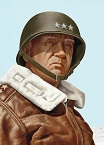ORIGINAL: spence
Aside from all the perks that the Japanese automatically get such as (in the "Historical" Scenario):
1) sinking or damaging double or thereabouts the number of ships which their PH raid actually inflicted
2) hanging Force Z out to dry
3) damaging Singapore (starts with the damage) with the same bombers that attack Force Z
4) giving the IJA enough supply to immediately launch one or more offensives in China in spite of the fact that it was stalemated and had been for 3 years (frankly there ought to be more a bigger difference between motorized supply such as the US enjoyed and the horse/mule drawn supply train of the IJA)
5) giving the IJN enough fuel to sortie all its BBs repeatedly when in reality sortie them once expended a whole years worth of fuel (speaking of BBs - other than the 4 Kongos the rest of the battlefleet was pretty much a joke throughout the Japanese Navy and its record in combat pretty much justifies that)
6) doubling of the IJNs ability to launch an airstrike from its aircraft carriers - doctrine AND carrier construction limited IJN carriers from launching all of their strike a/c in a single raid - two smaller raids are easier to fight off than one huge raid)
7) giving the IJN 1944 style USN fleet defense from the start when they didn't adopt the ring defense until 1944 and never developed a CIC/Fighter Direction Center at all.
8) the knowledge that most Allied submarines will be all but impotent until at Jan 1943
9) the removal of the SBD4 from the Allied OB (approx 900 airframes between Oct 42 and April 43 (there were essentially no SBDs in the Atlantic Fleet until Oct 1942 when Torch was launched) - since the SBD4 was all identical to the SBD3 the actual a/c is not important, rather the difference is in the overall replacement rate from the beginning of the war.
After all it's only a game. All that would be OK with me as well as allowing the Japanese Player to do whatever is desired within the constraints of production correcting operational deficiencies except that the Allied Player (which was far more adaptable to change than the hidebound IJA/IJN Supreme Command) is stuck making no adjustments whatever to the changed Japanese operational doctrine/tactics.
1) This has never been my experience, and I think most AARs testify to the fact that the Pearl Harbor raid, if not playing a historical Dec. 7th, is less effective than historical.
2) BBs Repulse and PoW were both sunk historically, so I have no idea what your objection is. In non-historical Dec. 7th turns, the allies can usually evacuate both BBs. This combined with a raid on Pearl Harbor that does less damage than historically, means that Japan in this game is often confronted with 3 or 4 more BBs than they were historically.
3) Singapore starts with damage to prevent the construction of fortifications immediately, I would assume. The British surrendered very easily here, and their surrender included the loss of the entire 18th division. That result is nearly impossible to achieve for Japan in the game. Again, I have no idea what you objection is, and what you portray as an IJN advantage is, in point of fact, a disadvantage over what happened historically.
4) The front in China had been stalemated mostly because Japan was pursuing The Thai campaigns and performing fleet exercises to prepare for a general Pacific War. After the war began, Japan did not furnish its military in China with supply sufficient to engage in offensive operations. This was a strategic-level decision by the Japanese High Command. Most Japanese players do spend supply in China. This is why Japanese players in this game have more success than Japan did historically in China. I can tell you, from experience playing Japan in several AI games and PBEM stock games, that if Japan does not send additional supplies to China, local supply allows for about 2 months of offensive operations and nothing more. Any additional supplies sent to China are supplies that are not available in other theaters.
5) The IJN most definitely does not have enough fuel in stock scenario 1 to make regular use of its BBs. I think every Japanese player can testify to this.
6-7) Air combat and naval air missions are abstracted in game terms and then handled, in large part, by the various subroutines for air-to-air combat and air-to-naval combat. Though a report may show X number of planes involved, the arrival times of those planes often vary signficantly. Most historians agree that the higher experience and better training of the early-war Japanese naval aircrews allowed for better strike coordination than the allies. Furthermore, all CAP is limited to 30% on station: this despite the fact that the A6M2 could stay aloft far longer than the F4F. If anything, the CAP rules for CV combat favor the allies as implemented in the game, not the Japanese. Once again, I am not sure what your objection is. As to naval AA, in stock all AA is fairly weak, and the AA ratings for most Japanese ships in the early war, except for the fast BBs and CVs, is pretty low. Do the allies lose an enormous number of aircraft to Japanese naval flak in 1942? I have never seen this to be the case, and this complaint seems to me to be about a very minor issue.













